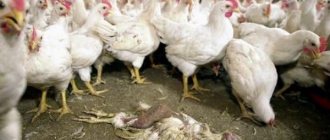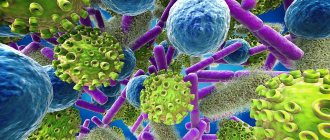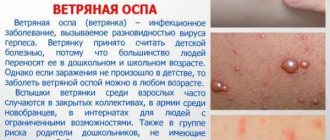State Autonomous Institution "Shilkinskaya Central District Hospital"
State Autonomous Institution "Shilkinskaya Central District Hospital"
Foot and mouth disease is an acute viral disease of artiodactyl animals. The causative agent of foot and mouth disease quickly dies at a temperature of 600 C, exposure to ultraviolet rays and conventional disinfectants. The virus retains its viability on animal fur for approximately 4 weeks and up to 3.5 weeks on clothing.
You can destroy this virus by:
- heating dairy products up to 60°C
- irradiation of artiodactyl fur with ultraviolet rays
- exposure to disinfectants in barns.
Why is foot and mouth disease dangerous?
Foot and mouth disease is transmitted from a sick artiodactyl animal to humans and mainly spreads in rural areas, among those people who work in agricultural livestock enterprises, meat processing plants that slaughter livestock and process animal raw materials. The mechanism of infection is contact and household contact, or through contact with contaminated objects.
The foot and mouth disease virus can also enter the human body after consuming contaminated dairy products. The virus cannot be transmitted from person to person.
What are the symptoms of the disease?
Foot and mouth disease is characterized by intoxication and vesicular and ulcerative lesions of the mucous membranes of the oral and nasal cavities. The incubation period of the disease averages 3 to 4 days, the disease itself can last from 2 to 14 days.
The disease process begins with severe chills, with the temperature rising to 40 degrees. These symptoms include headache, loss of appetite, and muscle pain, especially severe in the lumbar region. On the first day of the disease, the infected person feels a burning sensation and dry mouth, as well as strong salivation. After some time, small bubbles, approximately 1 to 3 mm, begin to appear on the mucous membrane of the mouth. Their largest accumulation is located on the tip and along the edges of the tongue, as well as on the gums, mucous membrane of the cheeks and lips. The liquid that fills the resulting bubbles is transparent, but gradually it becomes cloudy, the diameter of the bubbles increases, thereby forming erosions.
The patient may also complain of difficulty swallowing, as well as pain when speaking and chewing. In addition to the mucous membranes, rashes can also appear on the skin of the face, forearms, hands, feet and legs; they are especially common between the fingers. Provided that the disease proceeds without complications, the fever lasts from 3 to 6 days. After this, a period of recovery begins, which is accompanied by rapid healing of all ulcers. The total duration of the disease is about two weeks. In rare cases, foot and mouth disease can be fatal. Possible complications of the disease include pneumonia, myocarditis, and purulent skin diseases.
What methods of prevention exist?
Prevention of foot and mouth disease includes constant monitoring of various movements of animals and food products obtained from animals. If sick animals are found, they must be immediately isolated from society. It is prohibited to consume milk and meat from a sick animal. It is also necessary to observe personal precautions when caring for and working with a sick animal. After completing work with a sick animal, the premises and equipment are disinfected with 1% chloramine.
Infectious disease specialist of the highest category: N.N. Bogoutdinova
Print Email
Geographical distribution
In most countries of the world, especially agricultural ones, foot and mouth disease is one of the most common infectious diseases of animals. Only in New Zealand has it not been registered at all, and in Australia the last cases were noted in 1872, which is mainly due to the geographical isolation of these countries. In the past, epizootics (see) of foot-and-mouth disease often occurred, covering several continents; In the 20th century, foot-and-mouth disease in animals was recorded in the form of enzootics (see) or epizootics, usually recurring after 10-12 years. Until now, the incidence of foot and mouth disease in animals is very significant in South America, Asia and most African countries. Some countries bordering the USSR are constantly unfavorable for this disease, for example. Iran, Türkiye, Afghanistan.
Despite the prevalence of foot and mouth disease among animals, it is recorded extremely rarely in humans in the form of sporadic cases.
How dangerous is the foot and mouth virus for humans?
Fortunately, foot and mouth disease does not have serious consequences for the human body. Only in rare cases may the following occur:
- myocarditis – inflammation of the muscular lining of the heart. Manifested by the occurrence of life-threatening rhythm disturbances and heart failure;
- sepsis is massive blood infection with the foot-and-mouth disease virus. Characterized by the appearance of fever, shock;
- pneumonia – inflammation of the lung tissue due to activation of secondary microbial flora (Haemophilus influenzae, pneumococcus, mycoplasma, chlamydia, etc.);
- meningitis is a severe lesion of the meninges.
Etiology
The causative agent of foot and mouth disease is a virus belonging to the family Picornaviridae, genus Aphthovirus. There are seven serotypes of foot and mouth disease virus - A, O, C, Asia 1, SAT 1, SAT 2 and SAT 3, which have different immunological properties; in addition, more than 60 serovars are known. All types and variants of the virus cause disease with the same wedge picture. Serotypes A, O and C are widespread throughout the world, serotype Asia-1 is found in Asian countries, and serotypes SAT 1, SAT 2 and SAT 3 are found in African countries. Animals that have had foot-and-mouth disease caused by one type of virus may become ill again when infected with a different type of virus.
In the environment, the virus can persist for up to several weeks, and at low temperatures for up to several months. In the dried state, the survival rate of the virus increases. It is resistant to many chemicals. substances, but is inactivated when exposed to alkalis, acids, formaldehyde; quickly dies during pasteurization and boiling.
Pathological anatomy
Morphological changes in foot and mouth disease in humans have not been sufficiently studied. Changes typical for foot-and-mouth disease—vesicles and aphthae—develop in the epithelium of the mucous membranes and epidermis of the skin. In the epithelial cells of the mucous membranes, severe dystrophic changes occur, mainly of the type of vacuolar dystrophy (see). Along with this, cell shrinkage with nuclear pyknosis has been described. In the underlying area of the papillary dermis, hyperemia develops and serous exudate accumulates. Due to the partial preservation of the cells of the basal layer on the papillary layer, healing of vesicles and ulcers occurs without scar formation. In isolated cases, foot and mouth disease in people can become severe. In these cases, there is a significant spread of vesicular rashes, erosions, and ulcers not only in the oral cavity and pharynx, but also in the esophagus. In this case, vesicles are formed in the epithelial layer, exudate accumulates under the epithelium, and the bottom of the ulcers is represented by the submucosa, the surface of which becomes necrotic. Sometimes such pronounced exudation of the epidermis is observed that at autopsy the latter is removed from the hands along with the nails, like a glove. According to S.I. Ratner and co-workers (1956), with protracted foot-and-mouth disease, lymphoplasmacytic infiltrates are found under the epithelium of the mucous membranes in the area of dried erosion. The vascular endothelium is swollen, the connective tissue layer is hyalinized. An autopsy usually reveals an increase in the size of the heart due to the expansion of its cavities. The myocardium is flabby, clayey in appearance on section. Microscopically, serous myocarditis is detected.
Treatment
Patients with foot and mouth disease must be hospitalized and isolated until the acute manifestations of the disease cease, but for no less than 14 days (counting from its onset). Causal therapy has not been developed. Careful care for patients and an appropriate diet (fractional meals of liquid food 5-6 times a day) are of great importance. Locally apply mouth rinse with one of the following solutions: 3% hydrogen peroxide solution, 0.01-0.1% potassium permanganate, 0.1% ethacridine lactate (rivanol); Chamomile infusion is also used. Aphthae are treated with a 2-5% solution of silver nitrate or a concentrated (1-3%) solution of potassium permanganate. During the healing period of aphthae, it is recommended to lubricate them with vinylin, carotolin, rosehip or sea buckthorn oil. If the conjunctiva is damaged, eye washes with a 2% boric acid solution and instillation of a 30% sodium sulfacyl solution into both eyes are prescribed 5-6 times a day. In severe cases of the disease, especially in children, when a secondary infection occurs, it is advisable to prescribe antibiotics and detoxification therapy.
Pathogenesis
Pathogenesis is largely associated with the dermatotropism of the pathogen. The virus multiplies in the epithelial cells of the mucous membrane or epidermal cells of the skin, which is accompanied by an inflammatory reaction with the development of a primary affect - first in the form of vesicles and then superficial ulcerations. During the process of virus reproduction, a large amount of the pathogen accumulates in the serous contents of the vesicles, which then penetrates into the blood, and the process generalizes. Dissemination of the virus is accompanied by the formation of secondary aphthae on the mucous membrane of the lips, nose, tongue, and conjunctiva. In addition, the virus is retained in the skin capillaries, which leads to the formation of ulcerations in the interdigital folds of the hands and feet. Specific aphthae are also possible on the mucous membrane of the stomach, intestines and genitals.
How to avoid getting foot and mouth disease?
People whose work is in any way connected with animals should be vaccinated with an inactivated foot-and-mouth disease virus vaccine, which significantly reduces the risk of the disease. Sick animals must be treated, and dead animals must be burned. When working, it is important to observe the rules of personal hygiene and not allow persons with even minor skin injuries to work. Do not eat raw dairy products, boil milk for at least 5 minutes, and heat-treat meat products.
Prevention
The most effective method of preventing foot-and-mouth disease in humans is to eliminate it from animals. For this purpose, a complex of sanitary and veterinary measures is carried out (veterinary supervision of imported animals, immunization of healthy animals, quarantine, etc.). Persons caring for sick animals must be trained in the rules of personal and industrial hygiene and provided with special clothing. In order to prevent infection through milk and meat of sick and suspected animals, the sale of these products is prohibited; mhgo is sent for industrial processing, the milk is pasteurized at a temperature of 85° for 30 minutes or boiled for 5 minutes. Sanitary and educational work among the population of areas disadvantaged by foot-and-mouth disease is important, in particular, explaining the need for mandatory boiling of milk for at least 5 minutes.
Bibliography
: Boyko A. A. and Shulyak F. S. Yashchur, M., 1971; Korotich A. S. et al. On the issue of foot and mouth disease in humans, Zhurn. micro., epid. and immuno., No. 2, p. 132, 1974; Kravchenko A. T., Dorofeev A. A. and Nesterova Yu. F. Human foot and mouth disease, M., 1975; Multi-volume guide to pathological anatomy, ed. A. I. Strukova, vol. 9, p. 202, M., 1964; General and specific virology, ed. V. M. Zhdanova and S. Ya. Gaidamovich, vol. 1-2, M., 1982; Rat-nerS. I. et al. A case of protracted foot and mouth disease, Klin, med., vol. 34, no. 7, p. 70, 1956; P epep X. Foot and mouth disease, trans. from German, M., 1971; Rudnev G. P. Anthropozoonoses, M., 1970; Guide to Zoonoses, ed. V. I. Pokrovsky, p. 90, JI., 1983; S yu r i n V. N. et al. Laboratory diagnosis of viral animal diseases, M., 1972; V a g i e g e N., V e g g e g M. etBillaudelS. La maladie dite "ma-ins-pieds-bouche", Sem. H6p. Paris, t. 52, p. 2215, 1976; In 6 hm HO Die Maul-und Klauenseuche beim Menschen, Z. All-gemeinmed., Bd 48, S. 149, 1972; L oef frier F.u. F ros with h P. Summarischer Bericht uber die Ergebnisse der Untersu-chungen der Commission zur Erforschung der Maul-und Klauenseuche, Dtsch. med. Wschr., S. 617, 1897, S. 80, 97, 1898; Verge J. et Dh ennin L. La ftevre aph-teuse aminale, ses rapports avec 1'aphtose humaine, Rev. Path, gen., No. 714, p. 83, 1960.
G. N. Karetkina; V. N. Syurin (etiol., laboratory), I. A. Chalisov (pat. an.).









